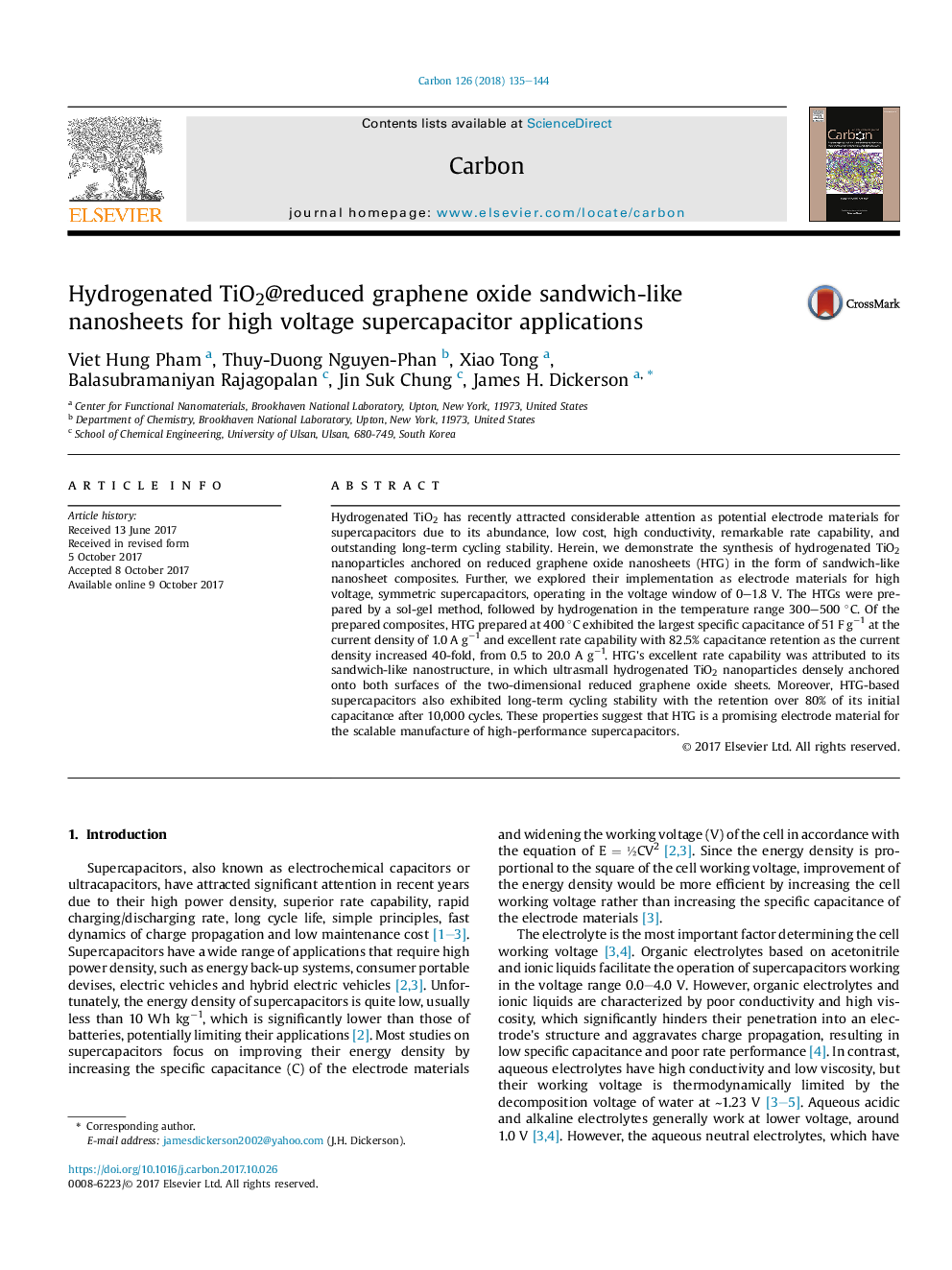| Article ID | Journal | Published Year | Pages | File Type |
|---|---|---|---|---|
| 5431495 | Carbon | 2018 | 10 Pages |
Hydrogenated TiO2 has recently attracted considerable attention as potential electrode materials for supercapacitors due to its abundance, low cost, high conductivity, remarkable rate capability, and outstanding long-term cycling stability. Herein, we demonstrate the synthesis of hydrogenated TiO2 nanoparticles anchored on reduced graphene oxide nanosheets (HTG) in the form of sandwich-like nanosheet composites. Further, we explored their implementation as electrode materials for high voltage, symmetric supercapacitors, operating in the voltage window of 0-1.8 V. The HTGs were prepared by a sol-gel method, followed by hydrogenation in the temperature range 300-500 °C. Of the prepared composites, HTG prepared at 400 °C exhibited the largest specific capacitance of 51 F gâ1 at the current density of 1.0 A gâ1 and excellent rate capability with 82.5% capacitance retention as the current density increased 40-fold, from 0.5 to 20.0 A gâ1. HTG's excellent rate capability was attributed to its sandwich-like nanostructure, in which ultrasmall hydrogenated TiO2 nanoparticles densely anchored onto both surfaces of the two-dimensional reduced graphene oxide sheets. Moreover, HTG-based supercapacitors also exhibited long-term cycling stability with the retention over 80% of its initial capacitance after 10,000 cycles. These properties suggest that HTG is a promising electrode material for the scalable manufacture of high-performance supercapacitors.
Graphical abstractHydrogenated TiO2 has recently attracted considerable attention as potential electrode materials for supercapacitors due to its abundance, low cost, high conductivity, remarkable rate capability, and outstanding long-term cycling stability. In this study, we demonstrate the synthesis of hydrogenated TiO2 nanoparticles anchored on reduced graphene oxide nanosheets (HTG) in the form of sandwich-like nanosheet composites. Further, we explored their implementation as electrode materials for high voltage, symmetric supercapacitors, operating in the voltage window of 0-1.8 V. The HTGs were prepared by a sol-gel method, followed by hydrogenation in the temperature range 300-500 °C. Of the prepared composites, HTG prepared at 400 °C exhibited the largest specific capacitance of 51 F gâ1 at the current density of 1.0 A gâ1 and excellent rate capability with 82.5% capacitance retention as the current density increased 40-fold, from 0.5 to 20.0 A gâ1. HTG's excellent rate capability was attributed to its sandwich-like nanostructure, in which ultrasmall hydrogenated TiO2 nanoparticles densely anchored onto both surfaces of the two-dimensional reduced graphene oxide sheets. Moreover, HTG-based supercapacitors also exhibited long-term cycling stability with the retention over 80% of its initial capacitance after 10,000 cycles. These properties suggest that HTG is a promising electrode material for the scalable manufacture of high-performance supercapacitors.Download high-res image (396KB)Download full-size image
